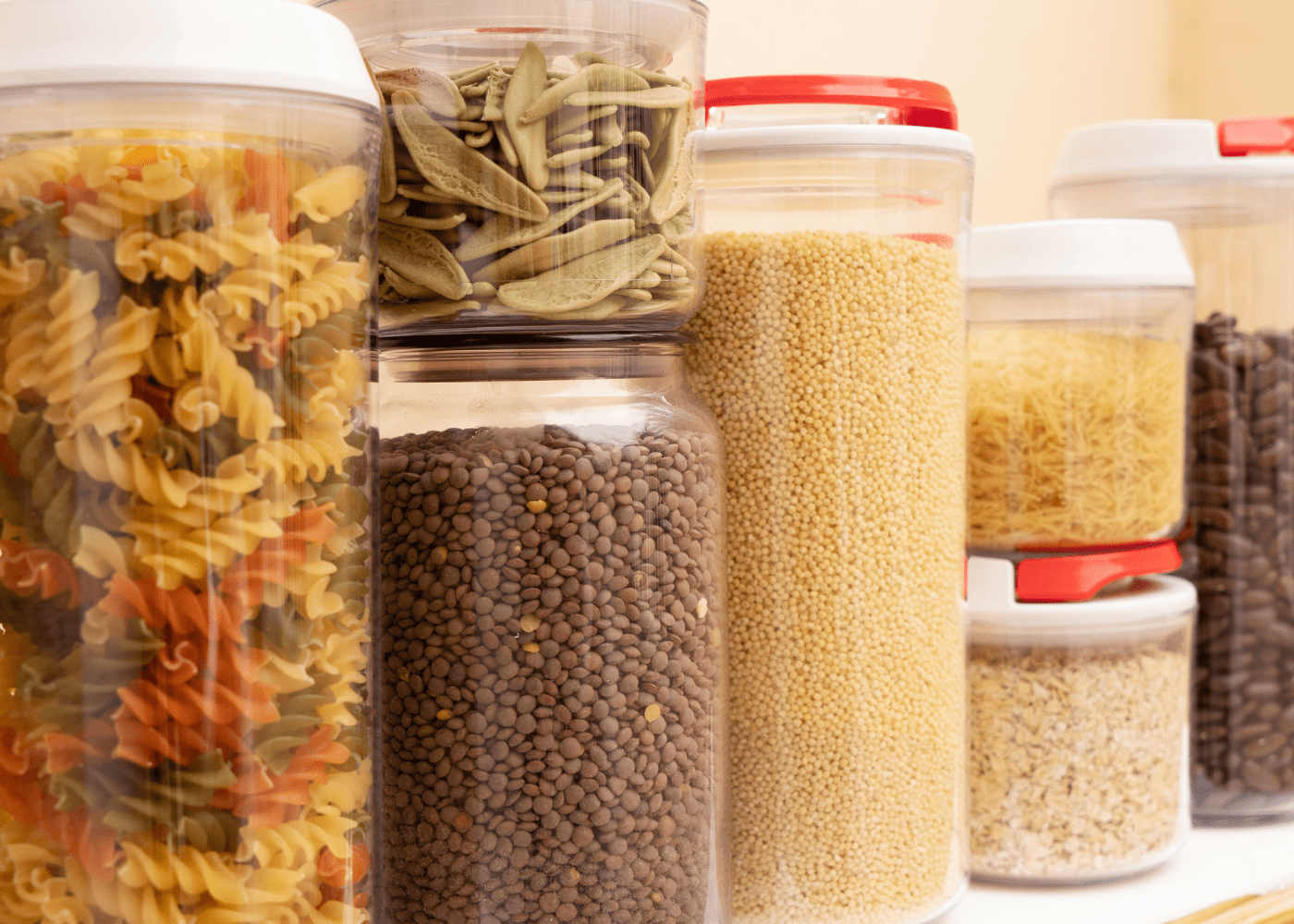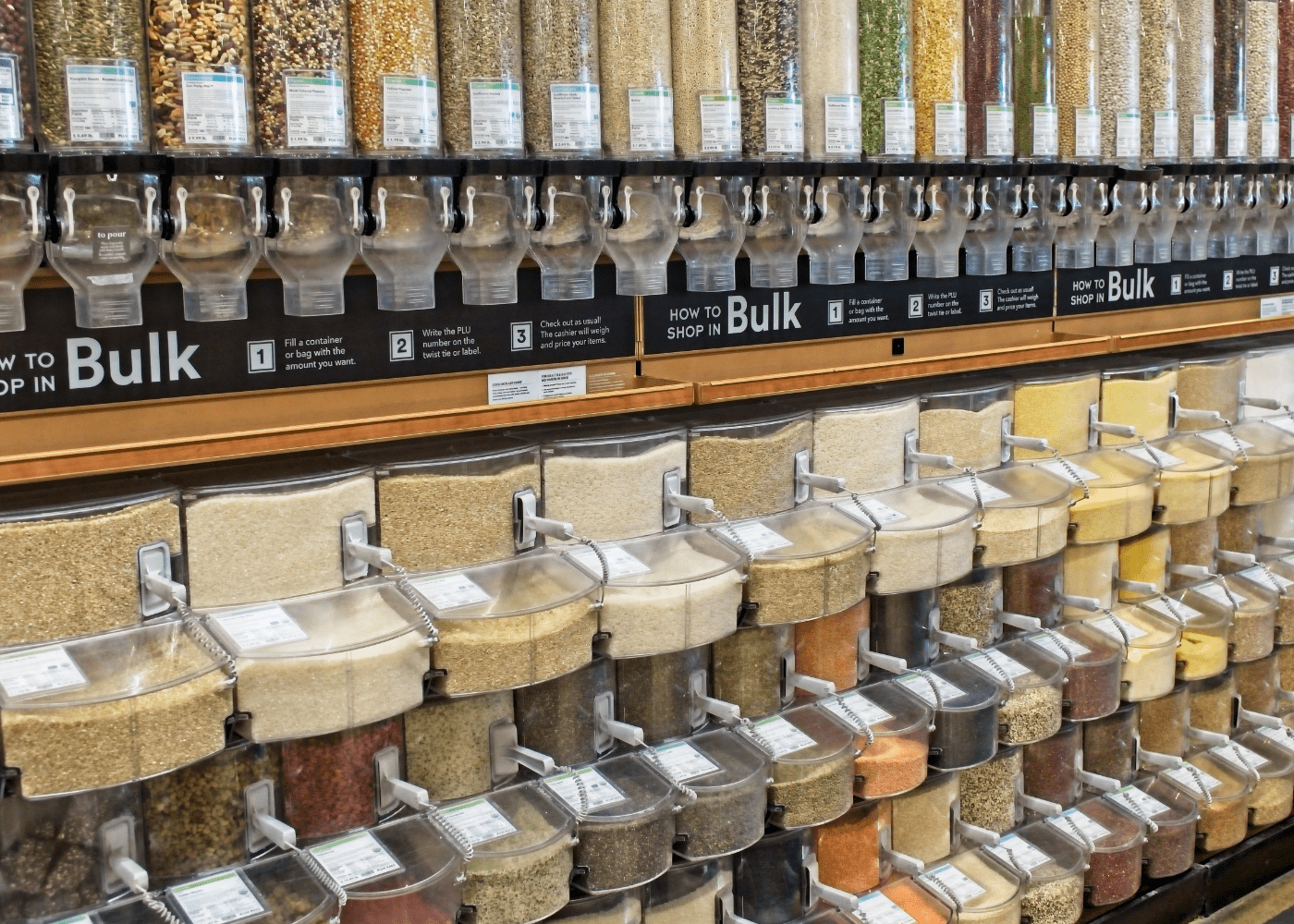Busy families require practical food storage solutions! Keeping food fresh is also one way to reduce food waste and lessen your grocery bill. In this blog post, we’ll discuss food storage techniques and provide tips on storing your food properly so that you can keep food fresh for longer while ensuring it is safe to eat.
What is food storage?
Simply put, food storage is the practice of safely storing food to preserve its quality and extend its shelf life. This involves everything from selecting food packaging that prevents spoilage to controlling environmental conditions like temperature and humidity.
Proper food storage can help reduce food waste, save money on groceries, and provide peace of mind knowing your food will be safe for consumption.

Types of food storage containers
When it comes to food storage containers, there are several options available depending on what kind of food you need to store. We will cover the best food storage containers and recommendations for using them, including glass containers, jars, plastic containers, and reusable bags.
Whichever type of container you are using, it’s important to make sure that it is sealed properly so air cannot get in and there are no spills.
Storing dry goods
When it comes to storing dry goods, the National Center for Home Food Preservation recommends storing dried foods in cool, dark, and dry spaces for long-term storage. And, if you can, try storing food that you have dried yourself in portions that you will use up all at once. This prevents spoilage from air and moisture exposure.
Store dried foods in clean, dry home canning jars, plastic freezer containers with tight-fitting lids or in plastic freezer bags. Vacuum packaging is also a good option.
National Center for Home Food Preservation
For other dry goods like pastas, granola, rices, and cereals, you can also store them in clear glass or plastic containers with labels. Using these is a more attractive way to store goods, and they stack neatly on the shelf, which helps with pantry organization
. If you choose to do this, note the expiry date!

Shopping bulk
If you can, it’s a good idea to stock up on bulk items that you use a lot of. You can either shop at a massive store like Costco to get large quantities for cheaper prices or you can bring your own containers to a bulk store like the Bulk Barn.
If you shop at a bulk store, you can also buy the exact amount that you need, which reduces the amount of food waste. While they usually have plastic bags in the stores, many encourage reducing plastic waste by asking you to bring your own container. You will weigh your food storage container before filling it, fill it, and then weigh it again to determine the price.
You can then store food in containers (like in the photo above) or other containers like wide-mouth jars.
Glass food storage containers
Glass jars or other airtight containers work great for dry goods like rice or beans, while bags are better suited for wetter items such as vegetables or fruits. You can also opt for food storage containers with lids or snap-lock systems, which help to keep food fresh and safe.
Jars are also excellent for storing things like homemade kombucha. Check out this kombucha recipe to learn how to make it!
Original packaging for food storage
Sometimes, it’s best just to leave food in the containers it comes in, rather than transferring them to another container. What I usually do with dry foods that I’ve bought in bulk is I have a smaller container for everyday use, and I refill it as needed.
Rather than buying sets of containers, though, I often use original packaging from other things I’ve bought. For this, I much prefer glass, because you can see exactly what it is and glass doesn’t hold odors from foods. For example, once I use up large jars of pasta sauces or other canned goods, I will thoroughly wash them and use them for easy storage of bulk goods.
Plastic containers and food containers
Some people prefer more aesthetic food storage options rather than having multiple sizes of jars and containers in their pantry. If you do, you might want to invest in bulk food storage containers like these ones from Amazon.
When buying containers, I always look for ones that have locking lids, and a tight seal, and come in a variety of sizes. This way, I can store food in the pantry take food to go, and use them for storing leftovers. Make sure you do leak tests before you transport meals, especially if you’re transporting liquids!
Another nice thing about using food storage containers that you can buy in a set is they stack neatly in the pantry. Many come with labels, too, so keeping your pantry organized is easy. Look for a “nesting set” if you want containers built to fit nicely together.
Avoiding plastic: Beeswax wraps
There’s always the option of using saran wrap (or plastic wrap) to cover food, but if you’re using that often that is a lot of plastic waste. An eco-friendly alternative to this is to use beeswax wraps (like these ones from Hiveology). They are made with just fabric, wax, resin, and sometimes a bit of oil. They’re reusable, washable, and are also excellent for storing baked goods like cookies or muffins! Click those links for delicious recipes.
Food storage hacks
Here are 18 super simple food storage hacks that make a big difference in how long your produce lasts.
Storing produce
Where and how you store your produce can significantly affect how long it stays fresh. Here are some things I do to:
- Store veggies and herbs in glass containers with a bit of water: This helps keep them from wilting. I do this for carrots, celery, and soft herbs like cilantro, parsley, and mint.
- Put extra herbs into a bag to freeze: I either add herbs to my frozen bag of veggie trimmings to make broth or keep them separate and add them to dishes as needed.
- Keep onions away from apples, garlic, and potatoes: Onions produce ethylene gas, which makes some foods ripen quicker than you can eat them. Check out Martha Stewart’s post for other fruits and veggies that should be kept separate
- Blanch and freeze veggies that are nearing expiration
Good Housekeeping also has 9 easy hacks to make sure your food stays fresh for as long as possible!
Reusable bags
This is a little eco-friendly reminder to bring reusable bags with you when you shop! There’s little sense in using plastic bags at the store, especially when buying things like fresh produce. It doesn’t matter if the food touches your cart or the check-out belt since you will be washing it anyway.
Another thing to keep in mind is many stores are going bagless! For this reason, I always keep bags in the car to reduce my plastic consumption and avoid having to pay for bags.

Storing food on the go
Mommas and kiddos are frequently on the go, so appropriate food storage is important! Here are some things to keep in mind to help you choose the best food storage containers for your family:
- Microwave safe: If your kiddos need to microwave their container, it must be microwave safe.
- You could also buy a thermos that keeps food hot or cold for a long time!
- Depending on the age, glass containers may not be ideal: Accidents happen, and you don’t want glass food storage containers to break if dropped accidentally. For little ones, plastic containers ma,y be the way to go.
- Use reusable sandwiches and snack bags to reduce plastic. Of course, the trade-off here is that they are more expensive up-front. But, since you can use them many times, it’s worth it if you can afford them.
- Do you prefer hand washing or prefer dishwasher-safe containers? I’m all about saving time, so the best food storage containers are dishwasher-safe.
- Are they oven safe? Of course, you’re not likely to be reheating your food in an oven if taking it to go, but it’s wise to buy But, it makes sense to buy dual-purpose containers when you can. For this reason, I love Pyrex containers because I can heat food in the oven (which tastes way better than the microwave)
For snack storage ideas, read our post here.
Conclusion
Finding the right food storage containers is important for keeping your food fresh for longer. And, in case you like to stock up or have an emergency food supply on hand, it’s important to consider how you will store bulk foods in your pantry. By using airtight containers ensures your food stays fresh, so look for a food storage container with a tight seal. You might consider using either jars and assorted containers that you already have or buying a set where the containers nest togehter
When storing fresh produce, consider if. it needs to be stored in the fridge or on the counter, and see if you can and prepare it right after you buy it to have lots of grab-and-go options that stay fresh all week. For some veggies, like carrots and celery, store them in glass containers with a little bit of water. This also works well for soft herbs, whereas hard herbs like rosemary are best wrapped and then placed in a sealable bag or container.
FAQs
Which food storage is best?
For produce, chop the pieces you won’t use and place them in either a container with a lid or in a jar of water. For herbs, either store them the same way or chop them up and freeze them in ice cube trays with oil for easy cooking. For dry goods, use whichever type of jar you prefer but make sure they have an airtight seal.
How do you store food long-term?
Long-term storage requires good containers that are airtight. Store items in a dark and cool place off of the floor, and make sure that no moisture enters the container.
Resources
References
Packaging and storying dried foods, National Center for Home Food Preservation
Family meals & food
Check out our meals category for posts with recipes and tips for food storage and organization.
